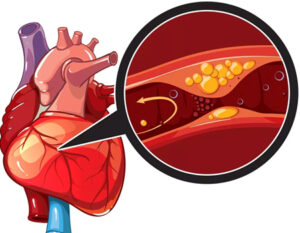Heart Disease – Coronary Artery Disease
Coronary artery disease is commonly referred to as Heart Disease in Singapore. It is one of most common causes of death.
It describes problems involving your heart’s blood supply. It is interrupted by a build-up of fatty substances in the coronary arteries. Over time, the walls of your arteries can become furred up with fatty deposits. This process is known as atherosclerosis and the fatty deposits are called atheroma.
Let’s look at the risk factors.
Non-modifiable risk factors. It is beyond your control.
With increasing age, the risks increase.
Men are much more likely than women. For women, the effects of menopause and the loss of hormone oestrogen from various causes increase the risks.
Risk differs with different ethnic groups. Indians and Malays are more likely and also have more severe disease trends.
Heart disease at young age especially runs in the family. One needs to be aware and manage other risk factors.
Women are protected by natural oestrogen till menopause. One’s oestrogen level is highest during her childbearing years and declines during menopause. At times, surgery is performed to remove uterus and ovaries for various causes, this induces menopause too.
Modifiable risk factors. You can do something about them.
Most people are not aware that they have high blood cholesterol. There are different ways to manage them. Diet, exercise, and medications are some ways.
High blood pressure can creep up on people without them realising. It again can be managed with diet, exercise, and medications. If not managed well, it can cause heart disease and other problems on the long run. Blood pressure is best measured at home, first thing in the morning when most relaxed. I would recommend having a blood pressure diary, measuring about four times a month. This adds value when you see your doctor.
It is recommended that adults over 40 years should have their blood pressure checked annually, and their blood cholesterol checked once every three years; more frequently if results are abnormal or if there are other risk factors.
Diabetes mellitus is often associated with older person disease. However, with increased affluence with consequent obesity, it is becoming a problem at even young ages.
Good weight, balanced diet and regular exercise help prevent diabetes mellitus.
Body Mass Index (BMI) is well publicised by the media. Having a good BMI for the average person manages the heart disease risk. Fat especially around the waist is shown to increase risk of developing heart disease. Obesity also causes high blood pressure, high cholesterol, and diabetes mellitus.
Ever changing world where a lot of us are based in front of computer adds to the inactivity. Regular, moderate physical activity helps put heart disease at bay.
This lowers blood pressure, cholesterol, and diabetes risks.
Smoking has been discussed extensively over the last 10 years. Unfortunately, people still do smoke regularly and socially. This is one risk factor that by stopping, one will definitely save money.
This lowers blood pressure, cholesterol, and diabetes risks.
Coronary heart disease – how does it fell like?
Everyone is different. The usual symptoms would be a reduction in effort tolerance. It can manifest as chest pain or shortness of breath on exertion or rest. It can difficult to differentiate between loss of stamina especially in the case of shortness of breath, compared to heart disease symptoms.

Diagnosis – How can we find out?
- Treadmill test. One exerts and heart disease can show up on ECG or imaging.
- Radionuclide scan. Injecting a dye and stressing the heart can help differentiate the issues.
- CT scan. Less invasive to investigate coronary artery disease.
- Invasive coronary angiography. It is an invasive diagnostic procedure that involves taking X-rays of the heart's arteries (coronary arteries).
Treating coronary heart disease (CHD)
- Changing the modifiable risk factors.
- Medicines – Thin the blood vessels and preventing stress of your heart.
- Angioplasty – where balloons and stents are used to open narrow heart arteries.
- Surgery – Coronary Artery Bypass Surgery

